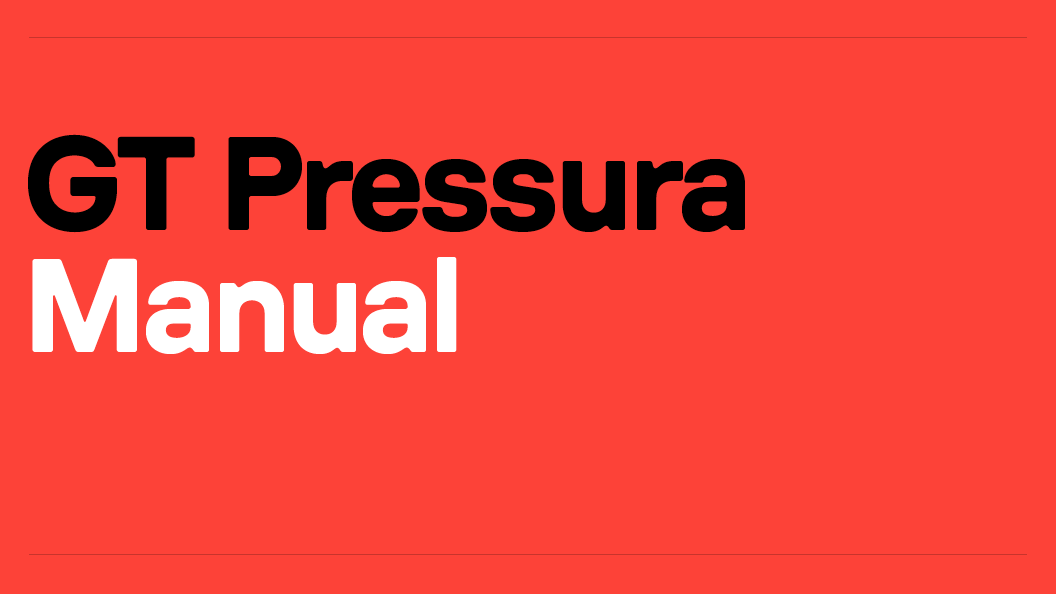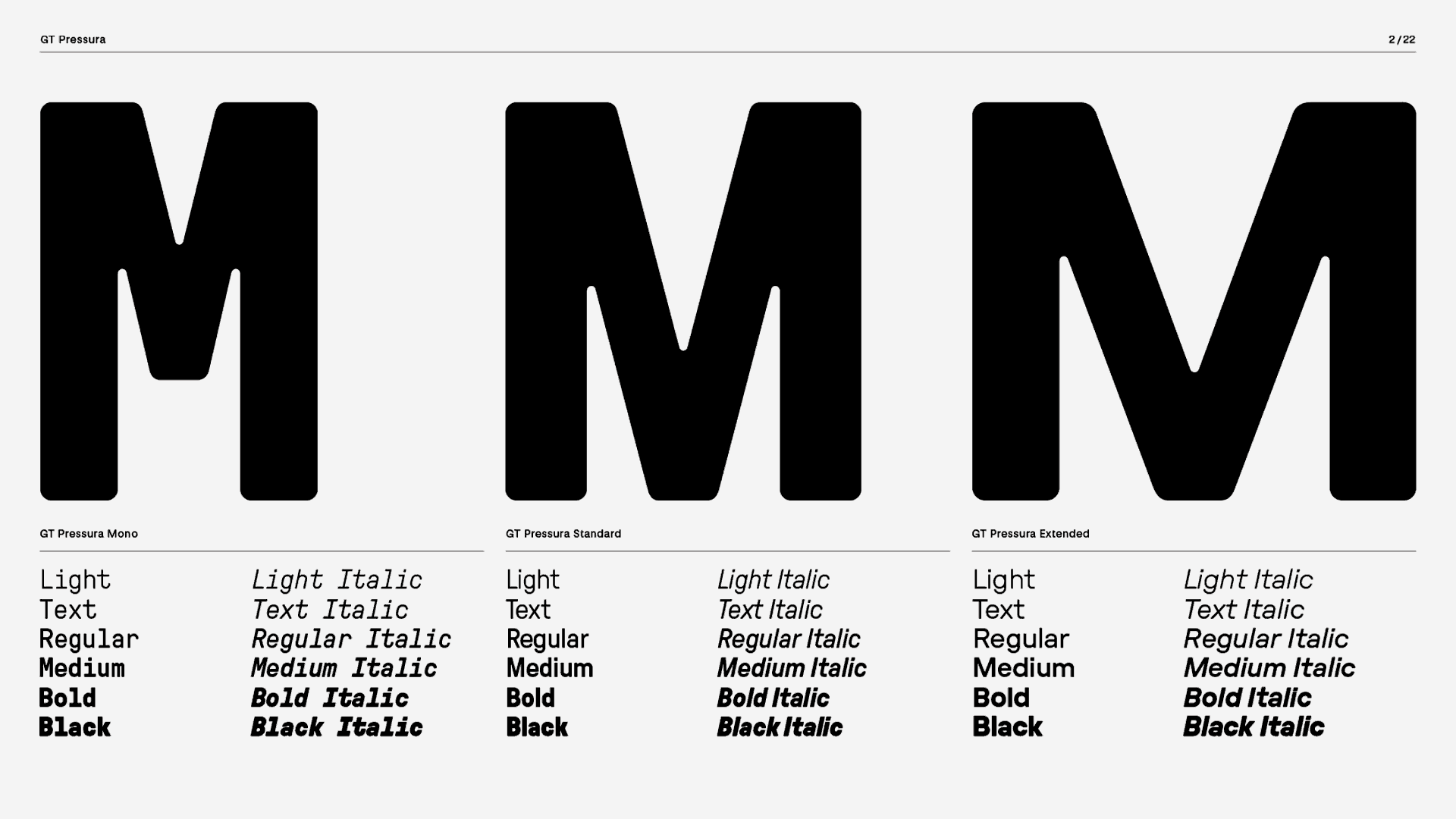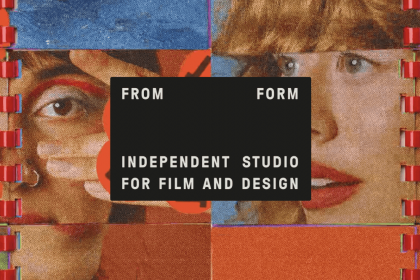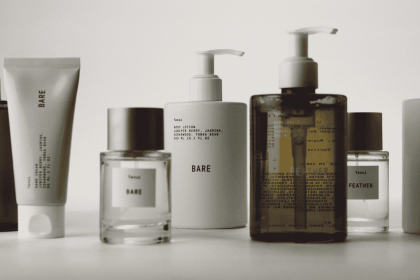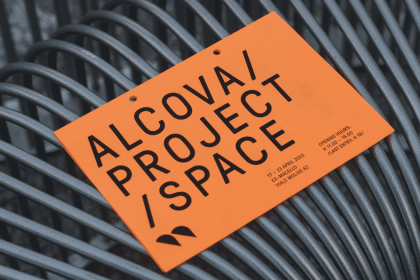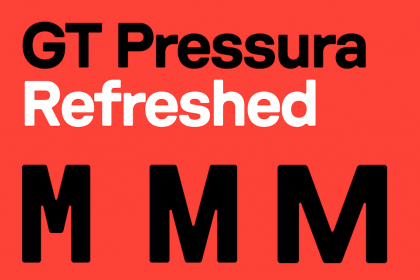GT Pressura
Family overview
- Standard
- Light Italic
- Text Italic
- Regular Italic
- Medium Italic
- Bold Italic
- Black Italic
- Mono
- Light Italic
- Text Italic
- Regular Italic
- Medium Italic
- Bold Italic
- Black Italic
- Extended
- Light Italic
- Text Italic
- Regular Italic
- Medium Italic
- Bold Italic
- Black Italic
Subfamilies
- Standard LightJust like cardboard boxes and pallets, these containers are a means to bundle cargo and goods into larger, unitized loads, that can be easily handled, moved, and stacked, and that will pack tightly in a ship or yard.
- Standard Light ItalicNếu coi toàn bộ nền kinh tế là một cơ thể sống, trong đó hệ thống giao thông là các huyết mạch thì vận chuyển hàng hóa là quá trình đưa các chất dinh dưỡng đến nuôi các tế bào của cơ thể sống đó.
- Standard TextBy the 1830s, railways on several continents were carrying containers that could be transferred to other modes of transport.
- Standard Text ItalicFacilitate their handling and to allow stacking, as well as being identifiable through their individual, unique ISO 6346 reporting mark.
- Standard RegularThe Liverpool and Manchester Railway in the United Kingdom was one of these. "Simple rectangular timber boxes
- Standard Regular ItalicCapacity, and up to 3.1 by 2.3 by 2 metres
- Standard MediumThe Liverpool and Manchester Railway in the United Kingdom was one of these. "Simple rectangular timber boxes
- Standard Medium ItalicΤύπος ΙΑ: 40 Χ 8 Χ 8 πόδια ή Τύπος ΙΒ: 30 Χ 8 Χ 8 πόδια
- Standard BoldUnited Parcel Service, Inc., Sandy Springs, Georgia, US, Founded 1907 by James E. Casey
- Standard Bold ItalicA system was selected for Western Europe, based on the Netherlands' system for consumer goods and waste transportation called Laadkisten (lit. "Loading bins"),
- Standard BlackLTL shipments range from 50 to 7,000 kg (110 to 15,430 lb), being less than 2.5 to 8.5 m (8 ft 2.4 in to 27 ft 10.6 in) the majority of times.
- Standard Black ItalicThis system used roller containers for transport by rail, truck and ship, in various configurations up to 5,500 kg (12,100 lb) capacity, and up to 3.1 by 2.3 by 2 metres (10 ft 2 in × 7 ft 6 1⁄2 in × 6 ft 6 3⁄4 in) in size.
- Settings
Typeface information
GT Pressura is inspired by metal type printing history as well as engineered letters stamped onto shipping boxes. It uses the visual gesture of ink spreading under pressure as a stylistic device, offering an alternative to more spindly typefaces of the digital age.
Typeface features
OpenType features enable smart typography. You can use these features in most Desktop applications, on the web, and in your mobile apps. Each typeface contains different features. Below are the most important features included in GT Pressura’s fonts:
- TNUM
- Tabular Figures
13.07.2048
- SS01
- Alternate a
React
- CASE
- Case sensitive forms
¿TE GUSTA?
Typeface Minisite
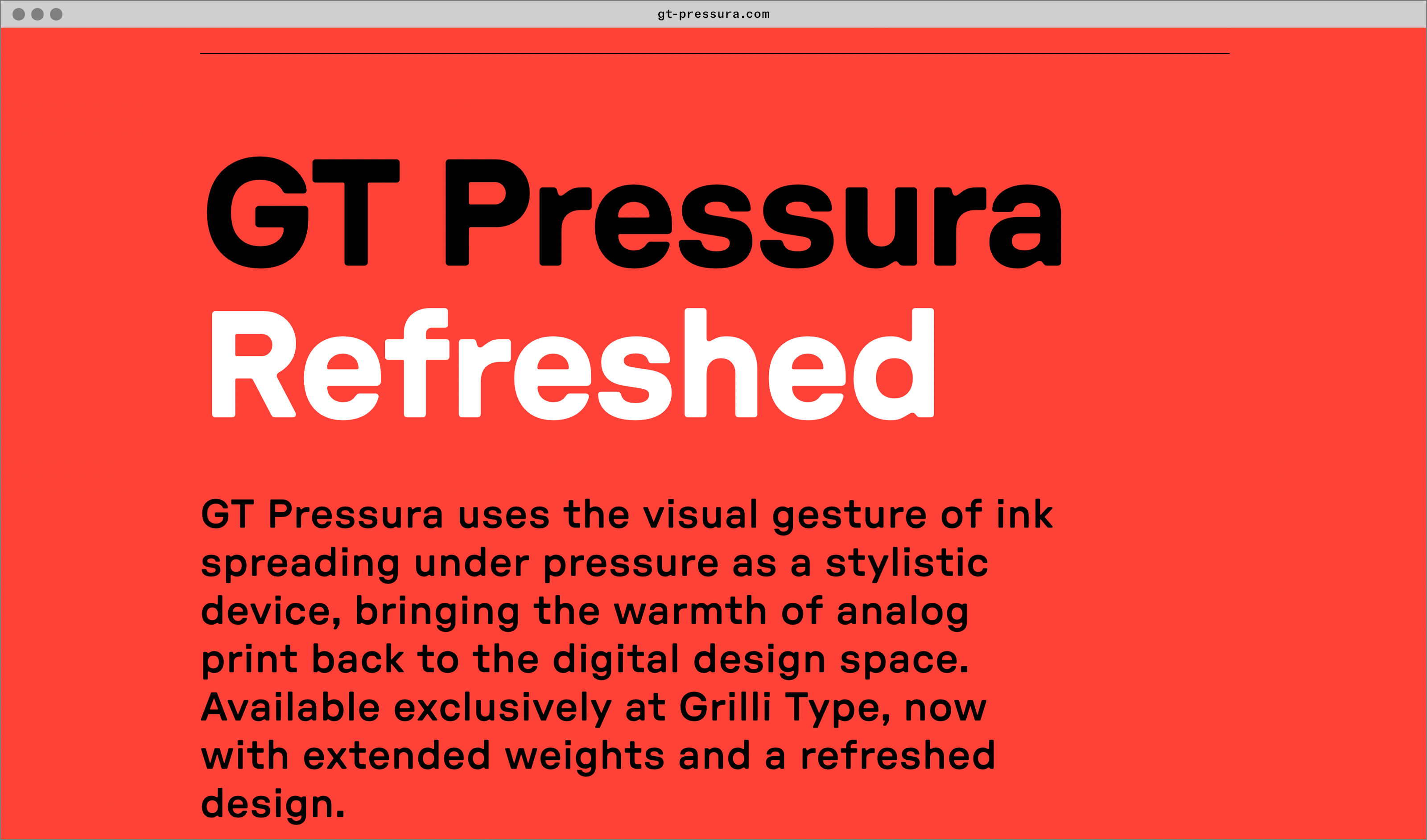
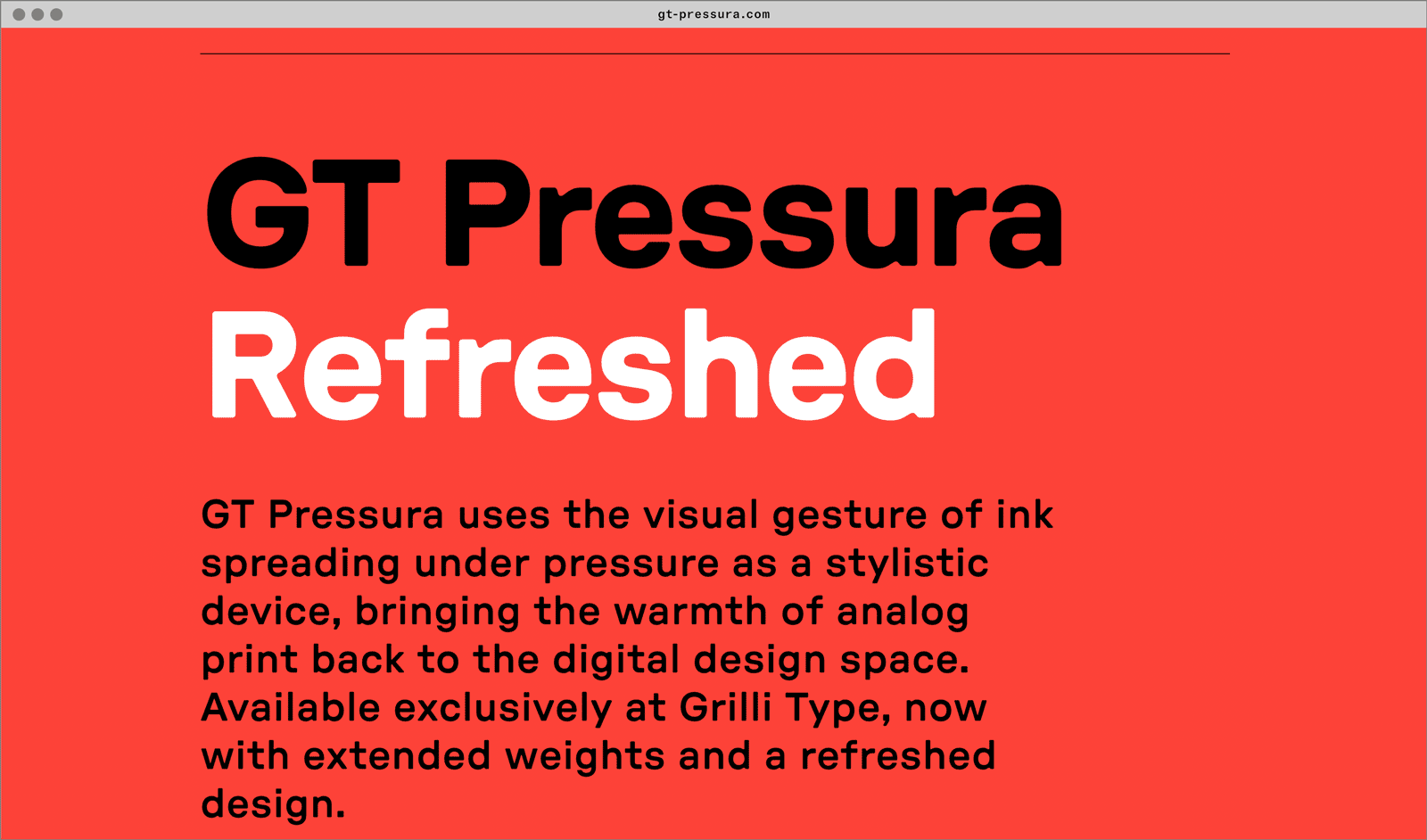
- Visit the GT Pressura minisite to discover more about the typeface family’s history and design concept.
GT Pressura in use
